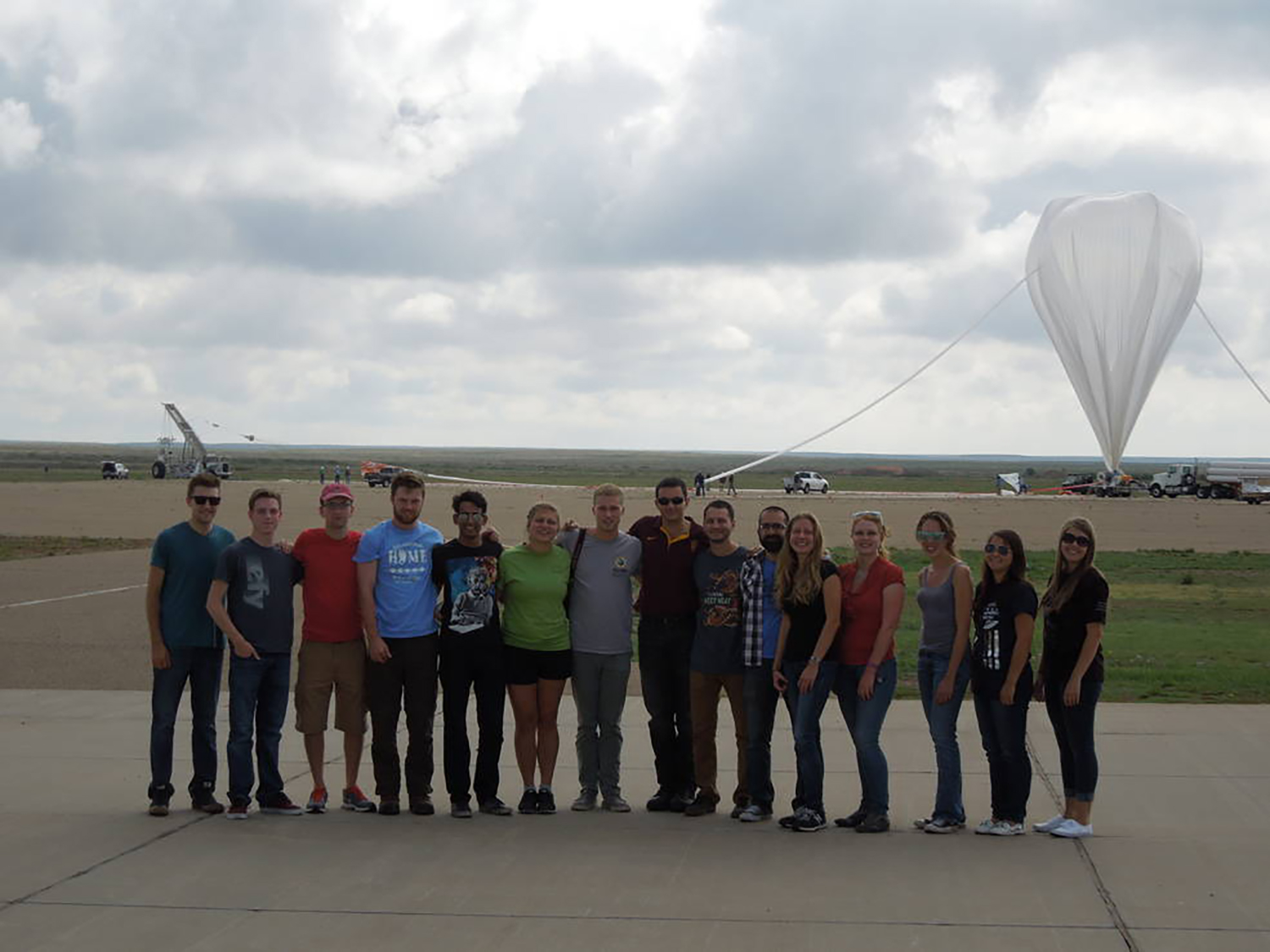NASA has selected 11 student teams to launch scientific payloads on a NASA heavy-lift balloon for the 15th High-Altitude Student Platform mission flying during the fall 2021 campaign in Fort Sumner, New Mexico.
Along with these payloads, the Colorado Space Grant Consortium in Boulder will hitch a ride on the final available flight spot, carrying student payloads from the RockOn! sounding rocket workshop scheduled in summer 2021.
The mission, known as HASP, is a joint project between NASA’s Wallops Flight Facility Balloon Program Office in Virginia, NASA’s Science Mission Directorate, the Louisiana Space Grant Consortium (LaSPACE) in Baton Rouge, and the Columbia Scientific Balloon Facility in Palestine, Texas.
“HASP is a real-world experience for students to build a science payload, launch it and analyze the data,” said Joyce L. Winterton, Wallops Senior Advisor for Education and Leadership Development. “These are the types of skills NASA needs for its future workforce.”
HASP can support up to 12 student-built payloads. It houses and provides power, mechanical support, interfacing, data downlink and command uplink communications for the instruments. Launched from NASA’s balloon launch facility in Fort Sumner, New Mexico, flights typically last 12 to 15 hours, flying in the stratosphere at an altitude of approximately 23 miles.
Since 2006, the HASP program has selected more than 161 payloads for flights, of which 134 have launched and 118 have been successful. The program has involved more than 1,400 students from 27 U.S. states and territories and three international teams.
Past student groups have flown instruments to flight test compact satellites and prototype long-range communication devices, perform space science experiments, sample particles at the edge of space, perform remote sensing experimentation, test rocket nozzles, and measure infrasound to correlate with geophysical events.
This year’s student teams and projects include:
- McMaster University’s Charged & Neutral Particle Tissue Equivalent Proportional Counter (CNP-TEPC) is a payload designed to provide insight into the quantities of charged and neutral particle ionizing radiation at higher altitudes absorbed by human tissue.
- Westview High School will test how three subsystems of the Portland State University’s OreSat CubeSat will perform in a space-like environment. This also serves as a STEM opportunity for Westview High School as they will lead assembly, integration, and flight of the payload.
- Louisiana State University will utilize their COMPASS experiment to measure the azimuth and elevation of the balloon payload during flight.
- Fort Lewis College will again fly their RAT (Radiation vs Altitude and Time) experiment, which measures high intensity ionizing radiation.
- Universidad Nacional de Ingeniería in Peru will test a cost-effective way to measure stratospheric aerosol properties using LIDAR and dust sensors.
- Inter American University of Puerto Rico’s experiment aims to understand how seismic waves travel through rubble-pile asteroids.
- University of North Florida (UNF) and University of North Dakota (UND) will fly their payload for the eighth time with HASP, continuing to improve upon their design for measuring the ozone within Earth’s different atmospheric layers.
- College of the Canyons plans to build a compact scintillator to detect antimatter collisions in the stratosphere.
- Gannon University’s project will measure cosmic rays interactions.
- Arizona State University’s WWASP payload that will measure Earth’s atmospheric transparency which will be tested against ground-based telescope data.
- Montana State University will test a proposed balloon flight termination system.
- The 12th spot will host extra student payloads from Colorado Space Grant Consortium’s RockOn! sounding rocket workshop scheduled for summer 2021.
Two of the schools, Westview High School and Universidad Nacional de Ingeniería in Peru, will fly their projects for the first time with HASP.
NASA’s scientific balloons offer low-cost, near-space access for payloads weighing up to 8,000 pounds to conduct technology demonstration tests as well as scientific investigations in fields such as astrophysics, heliophysics and atmospheric research. Depending on the goals and objectives of a specific mission, balloon flight durations can run hours to multiple days or weeks for longer-term tests and data collection.
For more information on the Wallop’s Balloon Program Office, visit https://www.nasa.gov/scientificballoons.
By Jamie Adkins
NASA’s Wallops Flight Facility



























